2021 MLS Season Previews: CF Montréal, FC Cincinnati, and New York Red Bulls
/We’re publishing three team previews every weekday until MLS First Kick on April 16th. You can find all of them here.
Today we’re looking at three teams that had disappointing 2020 seasons, but each for completely different reasons.
_________________________________________________
Montreal: Change is a-(Club de) Foot
By Kieran Doyle-Davis
Off the back of an extremely disappointing 2020 MLS season for the Montreal Impact, 2021 brings a lot of change. First off, they’re no longer the Impact. Club de Foot Montreal might’ve pissed off a lot of people with the name change, but much like the Chicago Fire and their badge rebrand, currently good teams don’t often look to change things up so much. And Montreal are not, and have not been, a good team. 2020 also saw the club say goodbye to designated player Bojan Krkic, with his option declined at the end of the year, and early 2021 saw the departure of head coach Thierry Henry.
In comes long time assistant coach Wilfried Nancy as the new head coach, who spent some time with the older age groups in the academy before joining the first team staff in 2016. He might be a rather large question mark heading into this season, but it’s always nice to see ex-U Sports folks doing well for themselves. But the bigger Montreal question marks for 2021 revolve around two fairly large trade acquisitions: Mason Toye and Djordje Mihailovic.
Mason Toye, the nine you want?
CF Montreal traded for Mason Toye back in October, for 600k in General Allocation Money (GAM) and a 2021 2nd round pick. Toye had shown solid, if unspectacular, xG numbers in fairly limited minutes (5.74 xG in 1338 minutes across 2018 and 2019) with virtually no creative numbers along with it (0.31 xA total across the same two seasons). Minnesota wasn't great those years and Toye never really settled in as the main guy under Adrian Heath, but Toye’s numbers before the trade are… alarming? A very low 0.21 xG p96 on a paltry 1.7 shots p96.
If we look at his g+ numbers, 2018 and 2019 Mason Toye show up as above average receiving value at +0.06 p96 and +0.03 p96 respectively. 2020 drops down precipitously to -0.03 p96. When we think about striking g+, receiving is the real bellwether of the striker’s ability to put up numbers. If good scorers generally take good shots, and good shots come from good areas, you either have to be able to get the ball and move into good areas, or you have to receive it in good areas. The positive for Montreal is Toye has looked like someone in the past who has received it in good spots.
All receptions valued at greater than 0.02 g+. Mason Toye has shown the ability to receive in good spots in the past, if he’s going to be the striker Montreal needs him to be, he’s going to have to do so more consistently.
The big problem with this trade is really the outlay. If you want to take a punt on a 21 year old striker who you think you’ve seen good stuff from? Fine, but 600k GAM is nothing to scoff at. If we follow Sam Goldberg’s methodology, newly of New York Red Bull, and consult the xGAM value for Toye in the DAVIES App, Toye would be worth closer to about $50k GAM (the equivalent of about just the second round pick Montreal sent). Montreal aren’t exactly a team itching to use GAM to go over the cap, but strikes me as an overpay. If the Club de Foot want to take steps forward next year, they’re going to have to get meaningful contributions from Toye.
Can you smell the circus, Djordje?
The other big move of the offseason was the acquisition of Winger-10-deep-lying-midfielder-thing Djordje Mihailovic from Chicago for 400k in 2021 GAM, 400k in 2022 GAM, and 200k in incentives. That is a hefty spend of funny money for just about anyone. Djordje is a tweener, and he mainly operated as one of the wide players in a 4-2-3-1 last season, but he really does drift inside and do real midfielder-y things from wide areas. In 2019, he dropped into the pair next to Dax McCarty, with Bastian Schweinsteiger as a centerback. What Montreal gets out of this is going to really depend on where he plays, but it is fairly clear there is talent there.
The many forms of Djordje Mihailovic: as a Defensive Midfielder in 2019 and a winger in 2020
Djordje has put together a solid body of defensive work and he is regularly a positive contributor on the interrupting side of our goals added model when compared to his positional peers. The big leap from him is going to come as a passer: over his four seasons in MLS, Mihailovic has connected on 54 passes in open play with a g+ value of over 0.02. For comparison, Alejandro Pozuelo has 58 just in 2020. If Montreal intends to use him as a midfielder, they’re just going to have to get more out of him. Considering the DAVIES model again, 2020 Djordje is estimated to cost 220k GAM - still probably an overpay, but certainly no Mason Toye.
Djordje Mihailovic’s > 0.02 g+ passes. Some cutbacks, some central through balls. Djordje’s next step will be increasing the volume of those high value passes.
Gambling in the Trade Market
Whatever is made of this season for CF Montreal, a lot is riding on how their two major trade acquisitions pan out (also don’t forget about Kamal Miller and his expansion draft trade). Mason Toye looks like a fairly sizable overpay but he’s 22, I wouldn’t bet on him turning into a 15 goal per season guy, but I wouldn’t be shocked either. Djordje Mihailovic looks like an interesting get and a smaller overpay, but at also 22 and with six USMNT caps to his name already, you can definitely see the line of thinking with this one a little more. In either case, for Montreal to have the season they want we will need to see some growth in both young players.
_________________________________________________
Cincinnati: A Better Team Gon’ Acosta
By Tyler Norman and Drew Olsen
FC Cincinnati finished the 2020 season with 12 goals from 21.4 expected goals and 36 goals against from 31.4 expected goals against. Their 0.93 xGF per game was the third lowest in the ASA era (since 2013). They were really really bad. Still, underperforming their xGF by more than nine goals suggests they may have just been a bad team that also got unlucky!
| Season | Goals Added For | Goals Added Against | Goals Added diff | |
|---|---|---|---|---|
| 2020 | 0.44 | 0.90 | -0.46 | |
| 2013 | 0.54 | 1.25 | -0.71 | |
| 2014 | 0.57 | 0.83 | -0.26 | |
| 2020 | 0.58 | 0.73 | -0.15 | |
| 2020 | 0.58 | 1.13 | -0.55 |
Goals added (g+) is here to crush those hopes. Cincinnati’s g+ for of 0.44 per game is the lowest in our dataset, fitting in snugly behind the legendary Chivas USA teams of 2013 and 2014. Thanks to an improved defense, their xGD and g+ differential were both improved from their 2019 season, but this was arguably the worst offensive team in MLS history.
So there’s nowhere to go but up!
New Guys
If it wasn’t already clear, major issue that FCC needed to address in the offseason was how to put the ball in the net. Their decisive answer was to bring in Sao Paulo FC’s Brenner Souza da Silva on the third-highest transfer fee in MLS history. The striker scored 11 goals and had three assists in his first 27 appearances as a professional in Brazil, meaning the 21-year-old scored about as many goals over his first 27 appearances as Cincinnati scored as a team in 2020. While the sample size on him remains limited, Cincinnati will hope his good form continues in MLS.
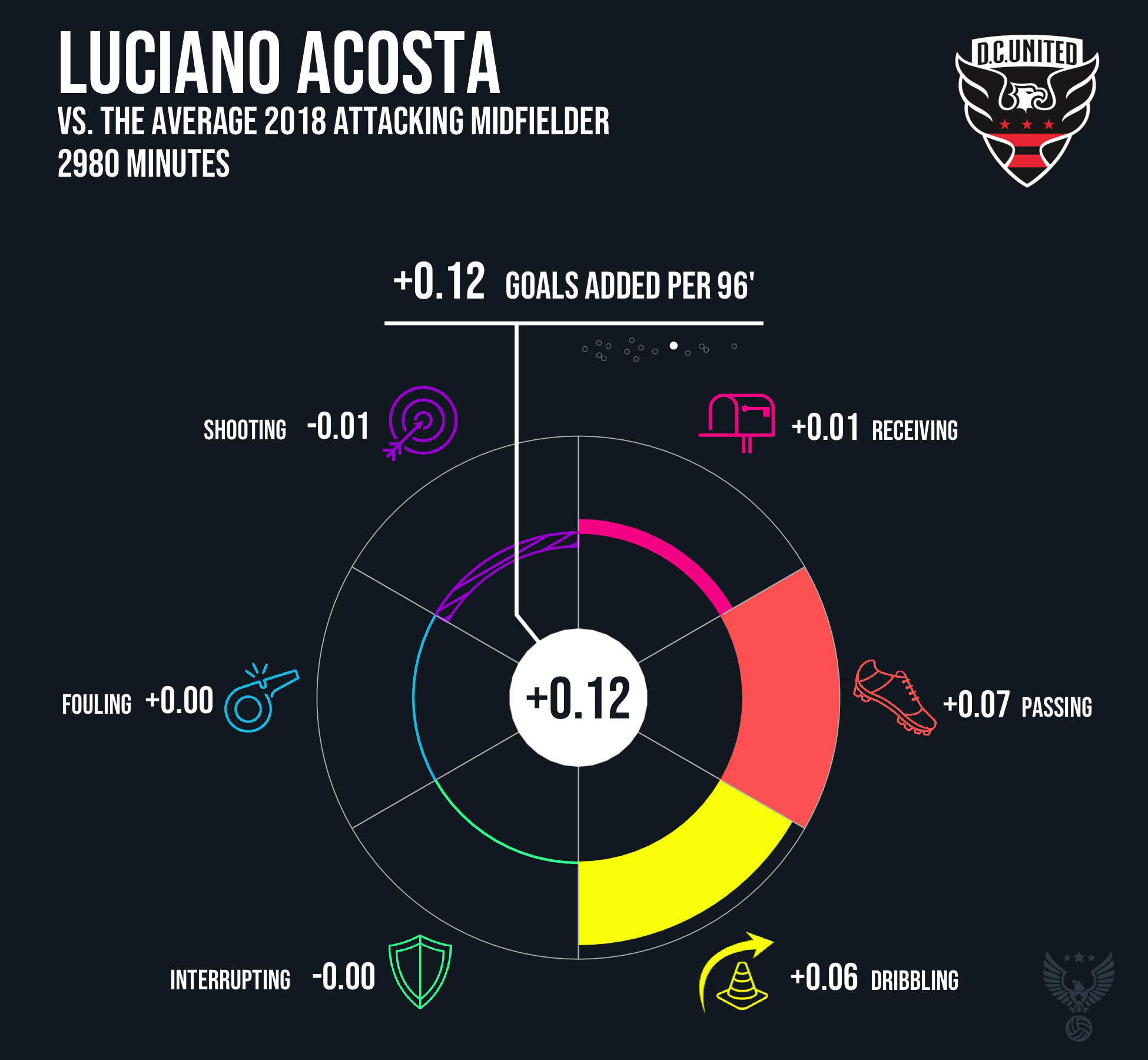
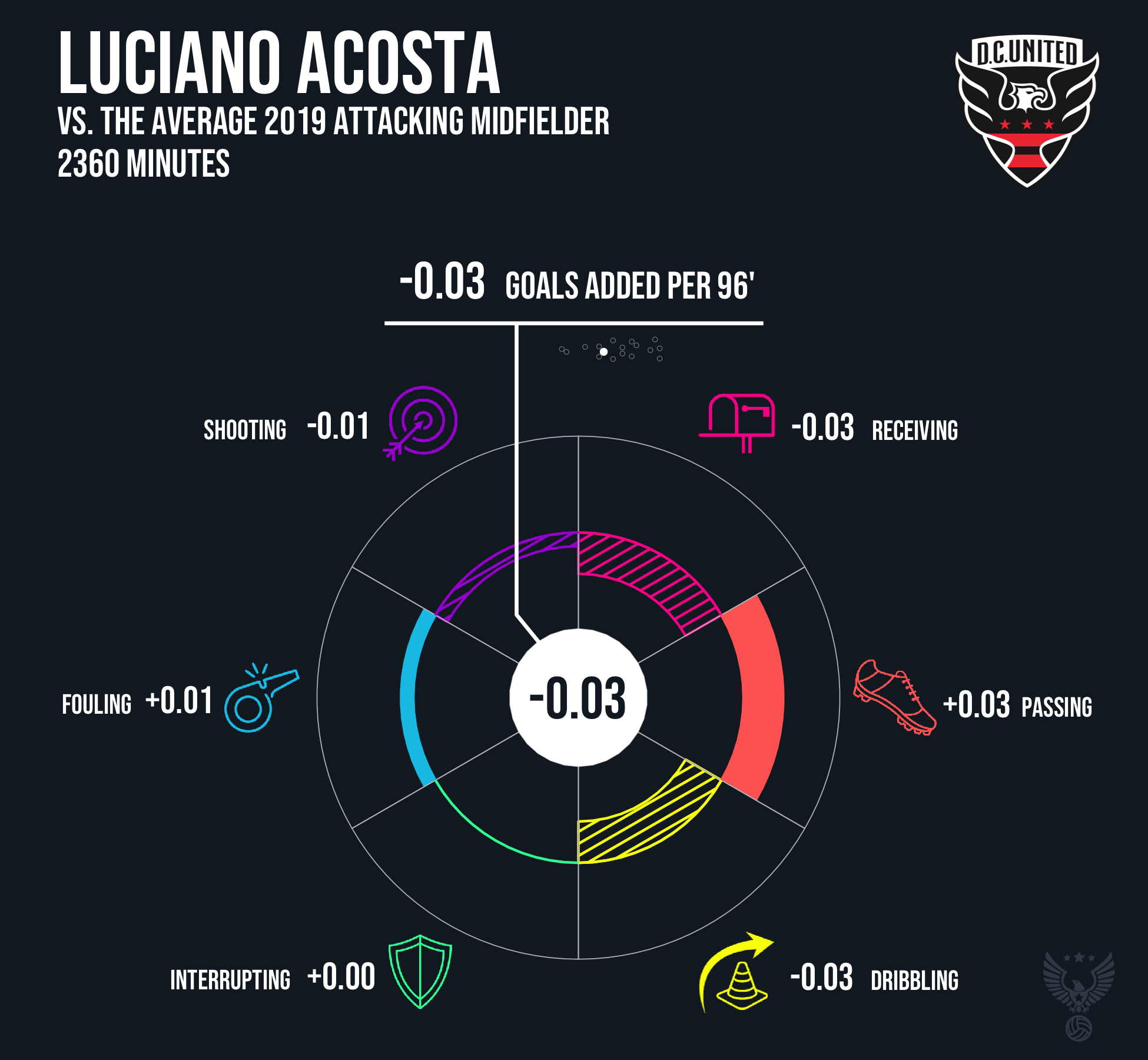
While Brenner is still largely unknown, the Orange and Blue also acquired a familiar face; former DC United playmaker Luciano Acosta. The attacking midfielder had MVP-like numbers in 2018, when he scored 10 goals and provided 15 MLS assists in 33 games alongside Wayne Rooney. Still, he outperformed his 5.4 xG and 6.2 xA numbers by a wide margin in 2018, and returned to earth in 2019 with six goals (4.8 xG) and zero assists (1.8 xA) before heading to Liga MX. Lucho continued his downward trend by contributing three goals and two assists in 32 games with Atlas.
His stats in the last two seasons are a clear indication that the playmaker has hit a bit of a slump. Was it the absence of an elite forward to pair with Lucho? Wayne Rooney was still present during most of the 2018/19 DCU season, though neither player was particularly impressive. Similarly, Atlas’ leading scorer while he was there only had five goals. Perhaps this means that Acosta just needs an elite scorer to play next to? With the striking partnership of Brenner and Acosta Cincinnati are hoping Lucho finds his form again.
Brenner and Acosta are the marquee names, but they’ve also added Isaac Atanga from FC Nordsjælland, who scored 11 goals of his own in 44 league appearances over the last two seasons. By adding Lucho, Brenner, and Atanga, FC Cincinnati’s attack suddenly has gotten much scarier (though we know how low that bar is). At ASA we are committed to reading too much into tiny sample sizes and preseason games, so Acosta’s nicely placed game-winner in preseason against the Fire is a sure sign they’ll be more prolific this season.
They also added talented fullback Ronald Matarrita from NYC, who is an instant upgrade on the left and Kamohelo Mokotjo who comes From Europe and will likely start in the defensive midfield.
What does it all mean?
The arrival of Acosta and Mokotijo also almost certainly means a reduced role for Haris Medunjanin, who was the only player on the team who was actually pretty good last season. Besides Medunjanin, the team’s new additions will be joining a not-totally-horrible-but-definitely-not-good core of other players whose names, not that you’d remember them anyway, can be found in more thorough team previews.
The major question mark hanging over the team currently is the status of former top SuperDraft pick Frankie Amaya, who has been pushing for a move. He seems to be highly coveted despite not producing much (-0.09 g+ per 96’ in 2019, -0.08 in 2020), as FCC just filed tampering charges against the Red Bulls and is asking for $1 million in compensation for him. The only goal of his career was really nice, but our crack team of analysts at ASA recommend trading him for a good player while demand remains high.
2021 Prognosis
So with a bunch of new additions and subtractions, what does all this change amount to? It could mean Cincinnati is more than a pushover for the first time in their MLS tenure, but at the very least it should mean they’re not one of the worst teams of all time for a third consecutive season. Yay!?
_________________________________________________
New York Red Bulls: It Gives You Wingers
By Alexander Xenopoulos
If you spend any time in the wonderfully gonzo corner of twitter that is RBNY fandom, you noticed something unusual this off-season: modest optimism. Many MLS commentators collectively expect the worst, but do not appreciate the attributes of Energy Drink Soccer (EDS) and the efforts made this off-season to remake the roster.
Part of the reason for optimism is that the interregnum of Armas-style muddleball is finally over, and there is now a clear direction. While many sought to absolve Chris Armas of any on-field responsibility due to the supposed lack of ”difference maker” signings (RBNY has not been that type of team for years, and yet achieved results), any reasonable observer was aware of the man-management issues, the lack of discernible tactics or goals on the field, and the misuse of many players who had previously excelled. The decline was noticeable with xGD falling from an incredible 17.3 in 2018 to 0.13 in 2019, and to -6.62 in 2020. Considering the continuity from 2018 to 2019, roster construction is not the main cause of that precipitous drop in quality.
The strength of EDS is that the collective team and system is much greater than the individual parts. New coach Gerhard Struber succinctly made this point stating, “Our philosophy is teamwork. My philosophy is not one about key players or special players; we need the whole team and that is the most important thing.” While Head of Sport Kevin Thelwell has a strong track record in the United Kingdom in identifying talent, the impact of Struber will be more integral to the immediate success of this new effort.
This space is not designed to provide a deep dive on the expected tactics (a good example would be this excellent piece on Struber’s time at Barnsley or this great five-part series from Once a Metro), but the Austrian is committed to the tenets of EDS. Tactically, Struber’s EDS will mean a strategy involving a very high line seeking to lure opposition into organized counter-pressing traps with triggers often focused on the liminal moments when the ball is turned over, or certain passing patterns from the opposing team. The goal is to use a variety of strategies to force the opposition backwards and away from the central channels towards the sidelines, until the ball is turned over. From there on the attack the point is to generate a plethora of chances by being quick, vertical, and direct. You can see how Struber’s Barnsley played from this Statsbomb infographic (compare to Bielsa’s famous Leeds side).
The players not only need to be fit, but also capable of making quick decisions in difficult moments, which requires a killer instinct and trust in the process. Struber historically played in a skinny diamond with lots of responsibility placed on the fullbacks or a variation of the 3-5-2/3-4-1-2. But Struber has been quick to switch formations in the past, and this off-season, the organization signed (Cameron Harper from Celtic) or looked to sign wingers. So Struber may approach his starting eleven differently than in the past. The question then comes what to expect of the personnel.
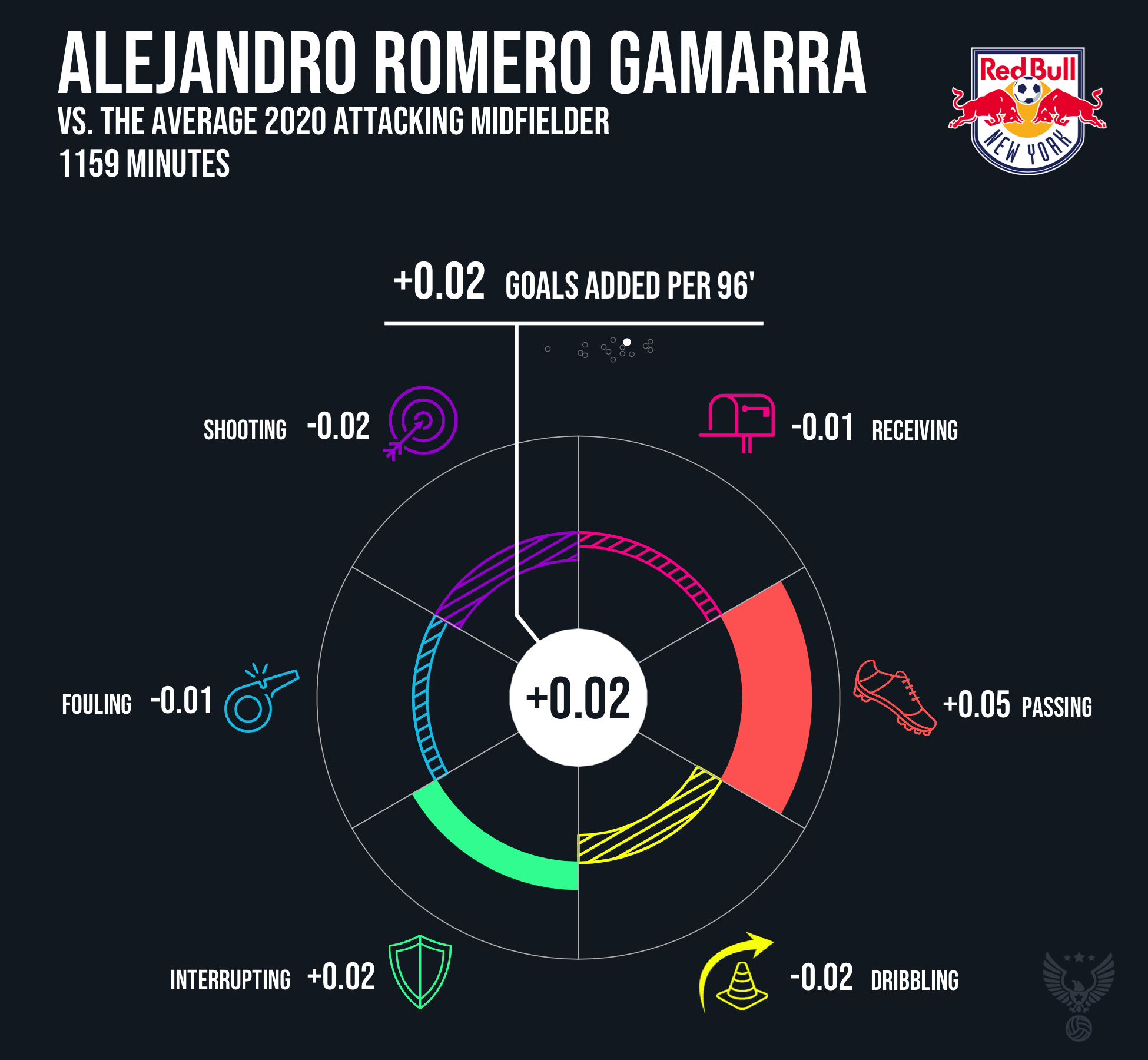

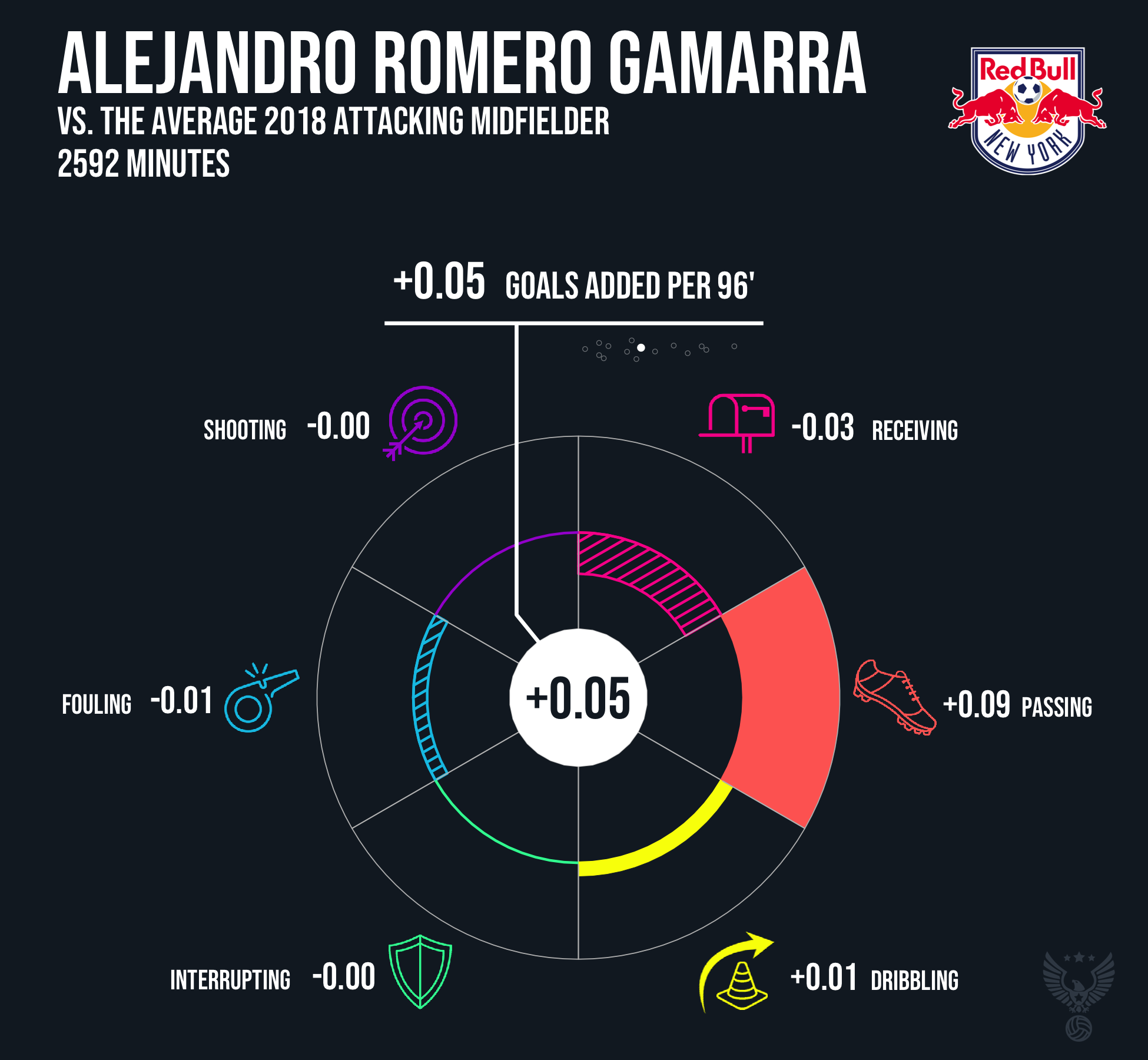
Roster
We first need to discuss the loss of the mercurial Kaku (Alejandro Romero Gamarra) who would have been ideal at the top of the diamond as a pressing 10. He fit into a long tradition of Metro 10s who were big characters on and off the field. While Kaku was a magical attacking player, one reason why Jesse Marsch targeted Kaku was his pressing. Post-Marsch, out of necessity, this developed into a commando style endeavor, where Kaku’s opportunistic forays would often result in a turnover, and a quick chance. He was an under-appreciated talent whose skills were misused.
MLS teams saw a quiet off-season, but RBNY brought on a number of players on loan (five), including players from the sister Red Bull clubs, and several youngsters with potential. Also of note are those who signed last year (including Dru Yearwood who should settle in the defensive midfield).
With such a large turnover in the roster (10 new players), potential new acquisitions still to come, as well as a new coach, there is a bit of 2015 going on when Marsch took charge. It is difficult at this point to assess how well the group will do, and how Struber will utilize the individuals. In addition, a strong rotation strategy will be needed due to international call ups. But it will be a big challenge for any individual to manage.
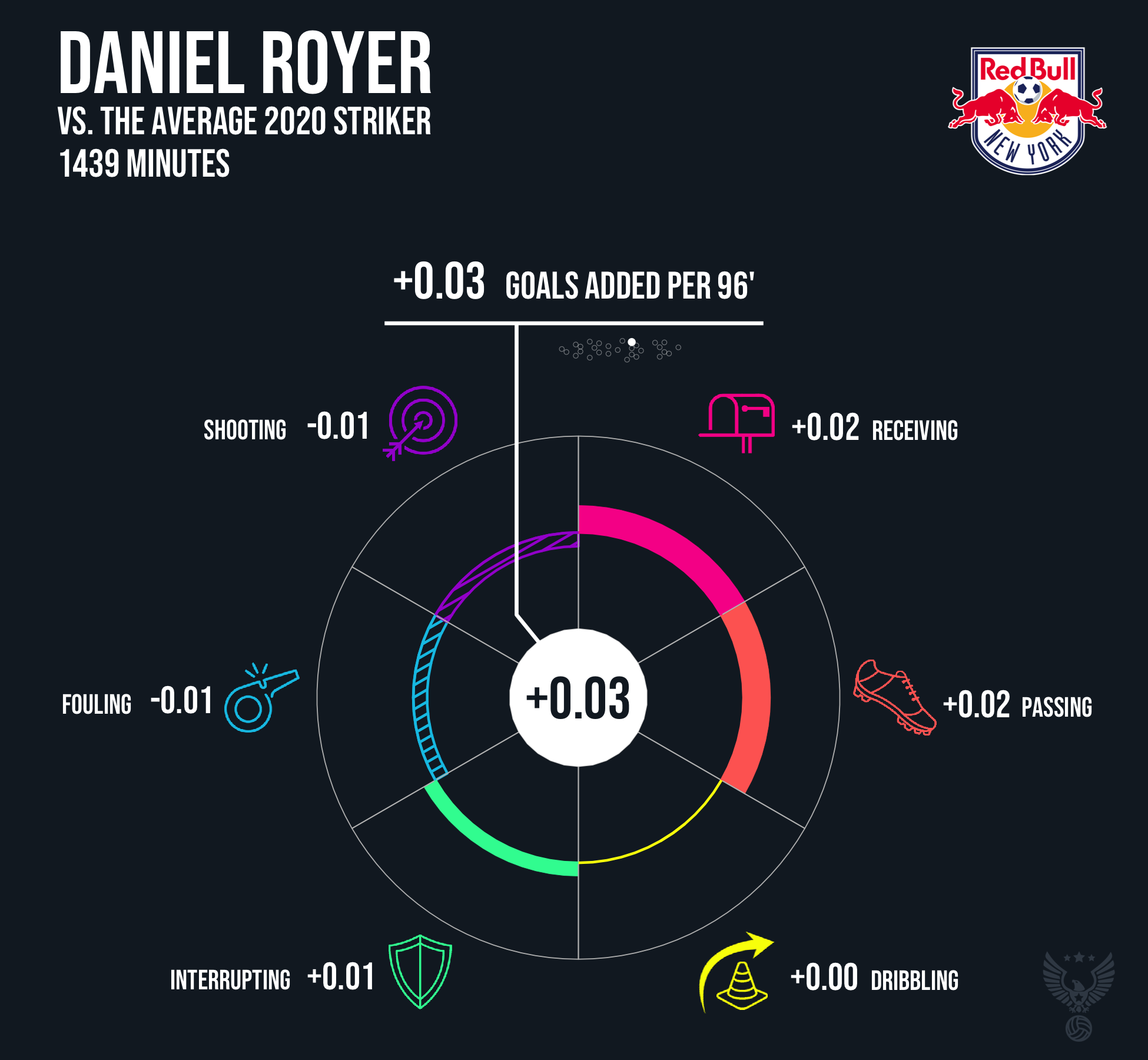
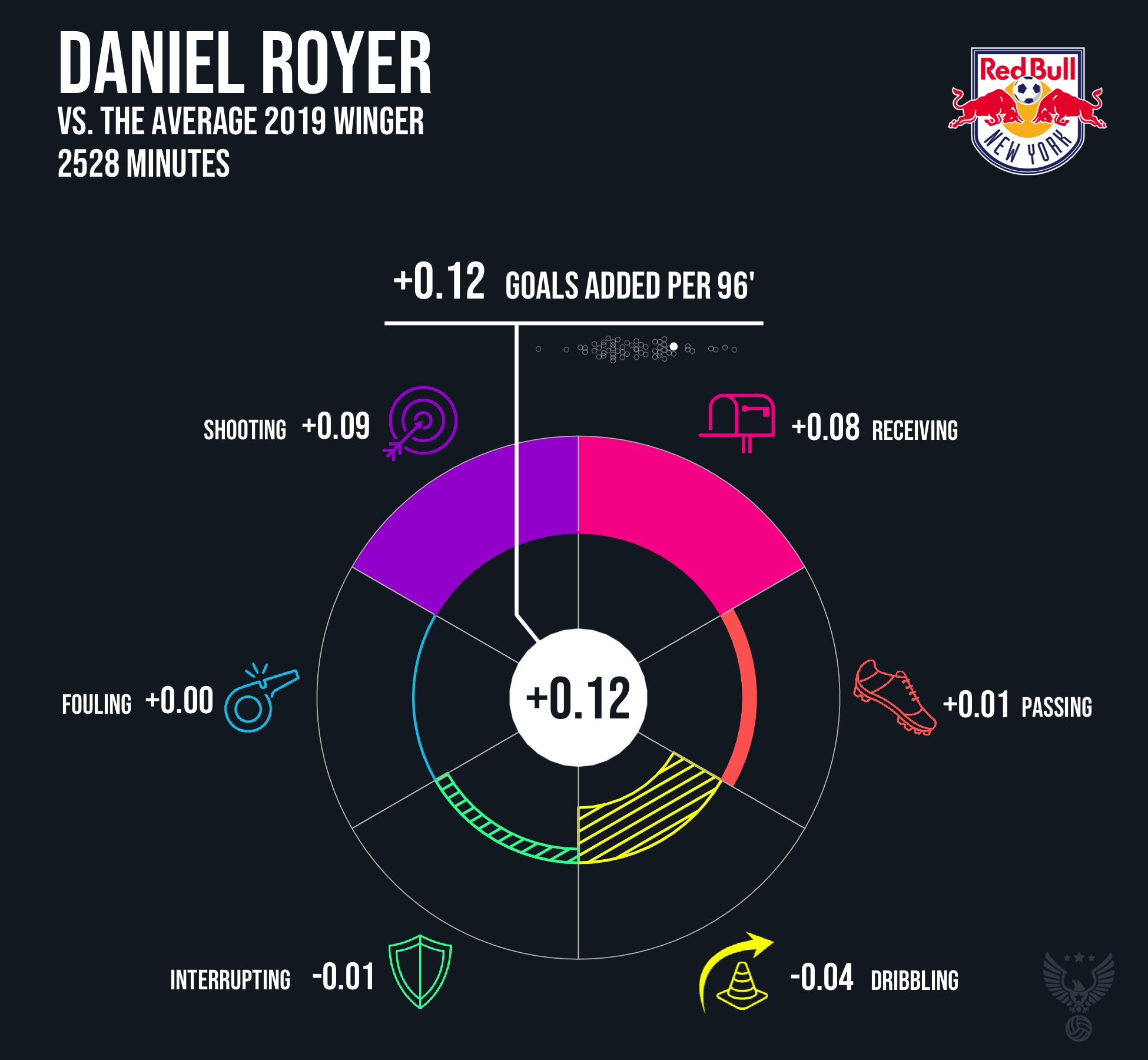
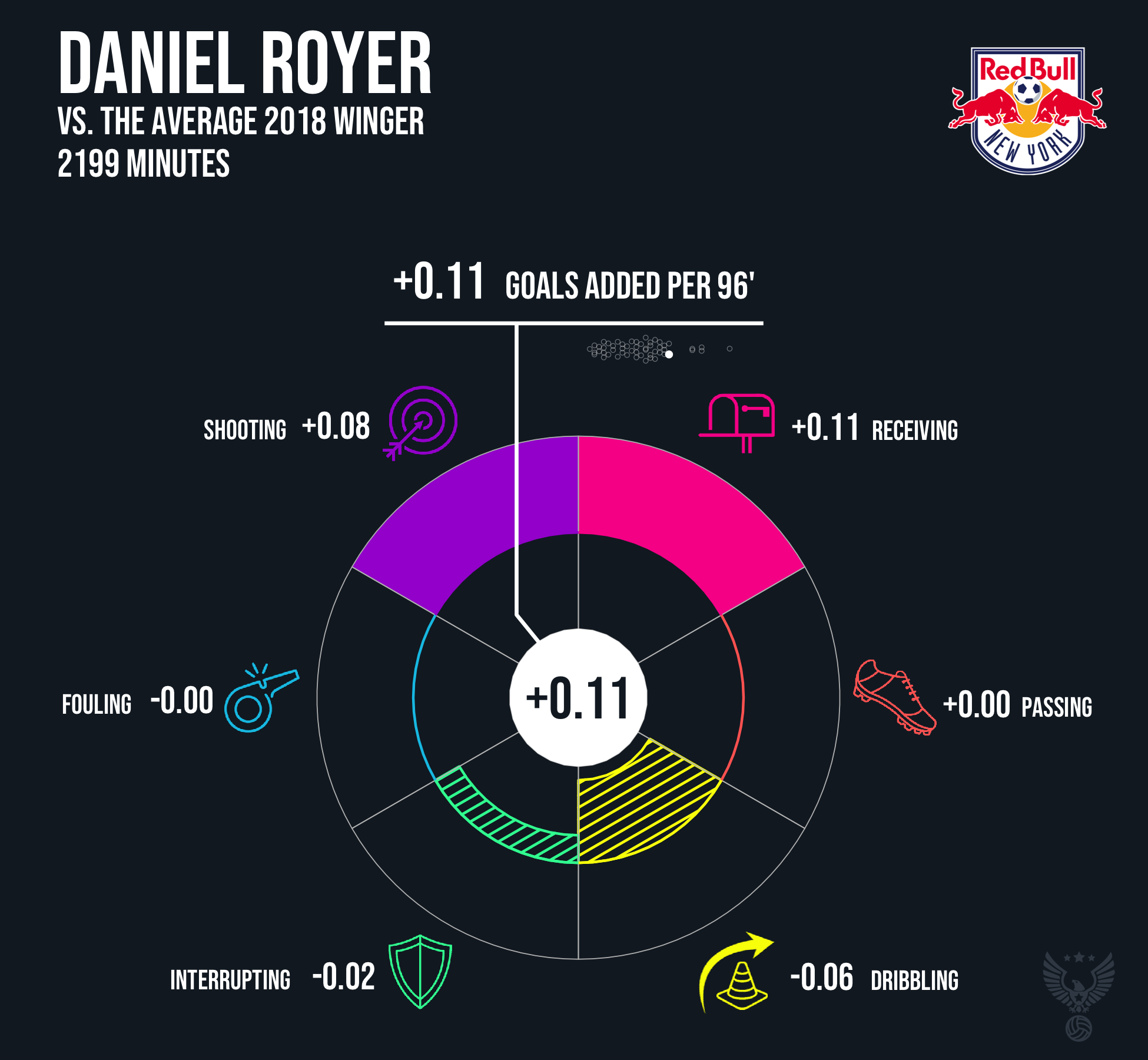
Struber will ask a lot of the forwards on the press, and Fabio is the big off-season acquisition as a loanee who brings a physical presence. While listed as midfielders, I include Royer and Omir here as the former is likely to be the one to play most often off of Fabio, and Omir has a quicksilver ability to play between the lines, and could be suited to such a support role. Royer clearly aged and doesn’t press like he used to, but he works hard with a nose for goal. He is the presumed secondary striker, unless someone takes the position. Can he generate offense like he did in prior years?
With the Red Bull commitment to youth, 18 year old Caden Clark is likely to slot into the top of the diamond with the shuttler roles occupied by committee. Florian Valot stood out in his ability to play in a deeper role, and he may excel within Struber’s system. Dru Yearwood was the big acquisition last year; he did show promise but never dominated the midfield at the six. But after a year of settling in, there is no reason why he shouldn’t own this role. Struber’s teams rely on lots of quick passing, so this quartet will need to be comfortable on the ball.
Wildcard
What RBNY does with Sean Davis is a big unknown. There are some rumors he may be moved. But, if Clark falters at the top of the diamond, Davis may be an option. Davis played in a variety of roles over his career, and while he performed better this past season deeper, he often doesn’t have the physicality to play as a sole d-mid and cover the ground needed. One interesting wrinkle was that Davis excelled behind the striker in the 3-3-3-1 lineup that Marsch utilized in 2017; how Struber deploys Davis will be interesting to watch as he could hypothetically be in one of several midfield roles higher up the field.
Since losing the 2018 league best duo of Kemar Lawrence and Amir Murillo, RBNY struggled to adequately fill the fullback position. Kyle Duncan provides a strong offensive output (only RBNY player last year in the top 100 as per aggregate G+ versus four in 2019 and eight in 2018), but he is often picked on defensively. The likely starters are two newcomers in Tom Edwards and Andrew Gutman, but Mandola Egbo deserves a longer look as well.
In true Metro fashion, the team could be facing a center back issue as Long will likely be away for extended periods of time for international duty. This is worrying as the backline will be vulnerable to counters if the pressing traps fail. Both Thelwell and Struber were ecstatic about the Andres Reyes acquisition, and he could be suited to the physical “hunter” role alongside Long performed by Parker in the past, or Miazga once upon a time. However, Reyes is untested and did receive a decent number of cards for Inter Miami. Tarek improved his game last year, but does have question marks. As does Nealis.
Carlos Coronel comes in on loan and could be the starter. It seems like the three veterans will fight for the starting position.
2021 Prognosis
The team will play an aggressive variation of EDS with a high line of confrontation. If the collective buys into Struber’s vision, and some of the new signings deliver, RBNY will surprise.

